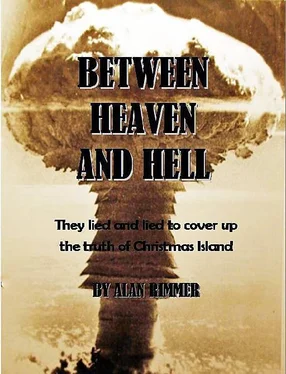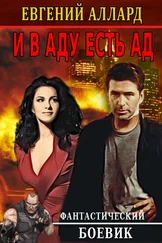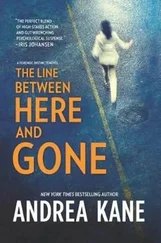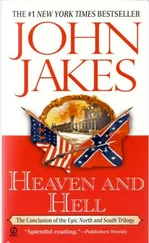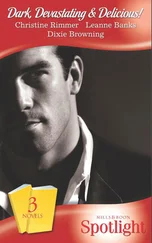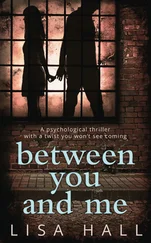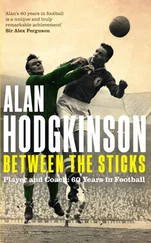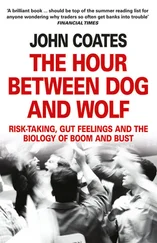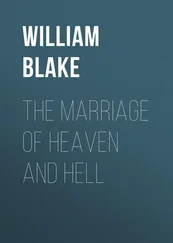They also interrogated the radio officers about the ‘disappearing contact’ on the morning of the bomb test. When one of the officers speculated the contact might have been a Russian sub, one of the officials was overheard to say: “Who said they were Russian?” (An unconfirmed report later said that a Royal Navy sub HMS Aurorchs had been present for the Grapple Y drop and in fact had been ordered to surface soon after the blast. It was speculated the sub was used as a spot check method of testing the island’s defensive radar equipment. The allegation came from a former crew member who insisted on anonymity. No official records exist of the incident, although it has been established that Aurorchs was in the general area at the time.)
The curious sense of gloom and depression noticeable after Grapple X was in evidence again after the Y explosion. A general malaise pervaded. Men didn’t go fishing; no beach games were played and there were no picnics on the beach. The birds had all gone and even the sea seemed sombre and empty. It was as though the very air was dead.
Huge quantities of alcohol were consumed, and word got round that the officers wanted the men to drink as much alcohol as possible because it warded off the effects of radiation! Joe Pasquini, one of the Canberra pilots said: “There was certainly a feeling that beer could stop you getting a dose of radiation. I had heard the same thing from American pilots who had flown through mushroom clouds. Either way it was a good excuse to get plastered.” (This rumour may have originated in tests carried out on foodstuffs after an American A-bomb test in Nevada codenamed Teapot. It was discovered that while other foodstuffs had been heavily contaminated, crates of beer had measured little radioactivity.)
To try to boost morale, the officers organised a ‘squadron regatta’, a race between rival landing craft around the harbour. But the event was marred by the appearance of large numbers of seriously injured manta rays and sunfish, gentle creatures prone to basking on the surface of the ocean. The wings on the manta rays, which could stretch to 30 feet, were severely burnt, while the large sunfish were badly seared on their upper sides. The creatures were clearly in great distress, but there was nothing anyone could do to help them.
Later that afternoon, as was customary, a party of naval officers went ashore for an island tour. They borrowed a Land Rover and headed for the south east point where the bomb had been detonated. Through coconut plantations, many bearing the scars of the blast, the small party headed through low scrub which gradually yielded to a scorched moonscape. The bare land, still smoking in places, was littered with dead birds and mounds of boiled land crabs.
At a low concrete bunker in one of the forward areas, the little group came across hundreds of oil drums strung together at varying distances from the shoreline. These were Penney’s trademark apparatus for measuring the strength of the blast wave. The drums were filled with varying amounts of water; it was a technique which Penney had perfected at the American tests in Bikini.
With the completion of the test, it was time for Pukaki to return to New Zealand and a farewell party was held attended by senior officers and scientists from the Task Force. For those who went ashore, it was a drunken, boisterous night enlivened by a commotion at the ‘wet bar’ in Port London when scores of servicemen ran amok. A full-scale brawl broke out during which a two-ton lorry was revved up and sent hurtling into the canteen, scattering men in all directions.
Pukaki crew members were hastily rounded up and returned to their ship. The vessel steamed away from Christmas Island the following morning leaving the smoking debris of the night’s depredations far behind. They, of course, from their vantage point of 80 miles from ground zero, were spared the worst effects of the bomb. The damage caused to their systems by the radiation released would not become apparent for many years.
But for those on the island and closer to the action, the effects started to manifest themselves within days. It started with a trickle, but soon long queues were forming in the sick bays with men covered in rashes and large blisters. Some had woken in their tents coughing up blood, while others suffered temporary blindness and nausea. These were classic signs of radiation sickness, but if records were kept, they were never made public. And for a very good reason: the military were all too aware of the uproar caused by an earlier American test at Bikini atoll, the piece of paradise in the Marshal Islands named as the US Pacific proving grounds.
On March 1 st, 1954 a huge H-bomb, codenamed Castle Bravo, was exploded on a small uninhabited atoll. The scientists had calculated the bomb would be in the region of five megatons. But someone got their sums wrong and the resulting explosion was at least three times that. The atoll was vaporised leaving a crater 300-feet deep. Trees burst into flames 30 miles away and islanders taken to ‘safety’ were showered with ‘snowflakes’ of radioactive coral. They soon started bringing in natives with hair falling out and skin peeling off. Three hours after the explosion the Japanese fishing boat Lucky Dragon was hit. More than 20 crewmen were contaminated. One died after reaching port. It was an International sensation, and the Americans were finally forced to admit there was heavy fallout on neighbouring islands.
The US tried to blame the weather. But official records came to light that showed ships were ordered further out to sea, suggesting fore-knowledge of what was going to happen. And nothing was done to warn the islanders or 28 servicemen stationed at an observation post downwind of the explosion. Thousands of square miles were contaminated and dose limits for those caught in the fallout were said to be 100 times higher than normal levels.
Measurements taken on Christmas Island after Grapple Y were even higher, but this would stay secret for at least 50 years. Meanwhile Britain’s military planners ordered that any hint that the island was contaminated was to be avoided at all costs. So when men reported sick they were told their injuries were caused by coral dust or allergies. When they applied for their medical records years later, many found they had disappeared or been destroyed. Later manifestations of more serious illnesses were dismissed as “coincidence”.
Bob Bates, the pilot of the aircraft that dropped the bomb subsequently died of leukaemia, as did Squadron Leader Kenneth Charney. They were just two out of scores of servicemen who later contracted blood cancers after witnessing the bomb test. Records show that hundreds of men later suffered cancers, bone disease and a variety of illnesses that can all be linked to radiation exposure. The authorities were not too concerned about these because most emerged through the passage of time and could be explained away.
But the early victims were a different matter; they could not so easily be ignored and had to be hidden at all costs. Flt Lt Denson was sent packing as soon as it became clear he had ‘exceeded the recommended safe dose’ for radiation exposure. He was told not to talk to any of the other men, but to return to his home base at Bassingbourn at the earliest possible moment.
Joe Pasquini remembers seeing Denson in the decontamination centre. He said: “Eric was a quiet sort of guy, but he was always sociable and at his ease. When I saw him he was being violently sick in the washroom. I pretended not to see him in case I embarrassed him. He was obviously not a well man.” Pasquini resolved to have a drink with him later, but he never saw him again. “He just took off with hardly a word to anyone,” he said. “We were a pretty close-knit little unit, and it was unusual. But we knew not to ask questions. I’m sorry now that I never spoke to him.”
Читать дальше
